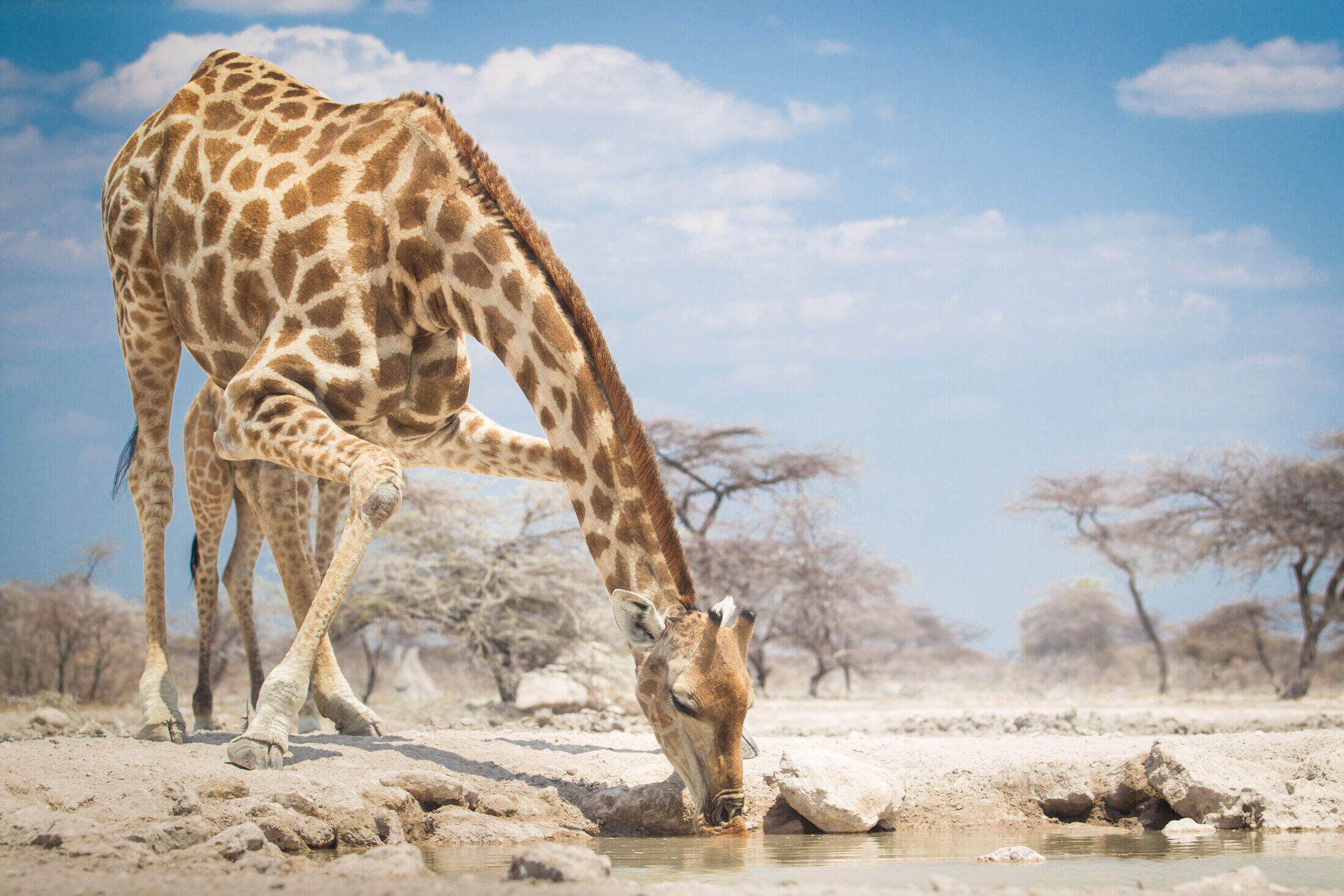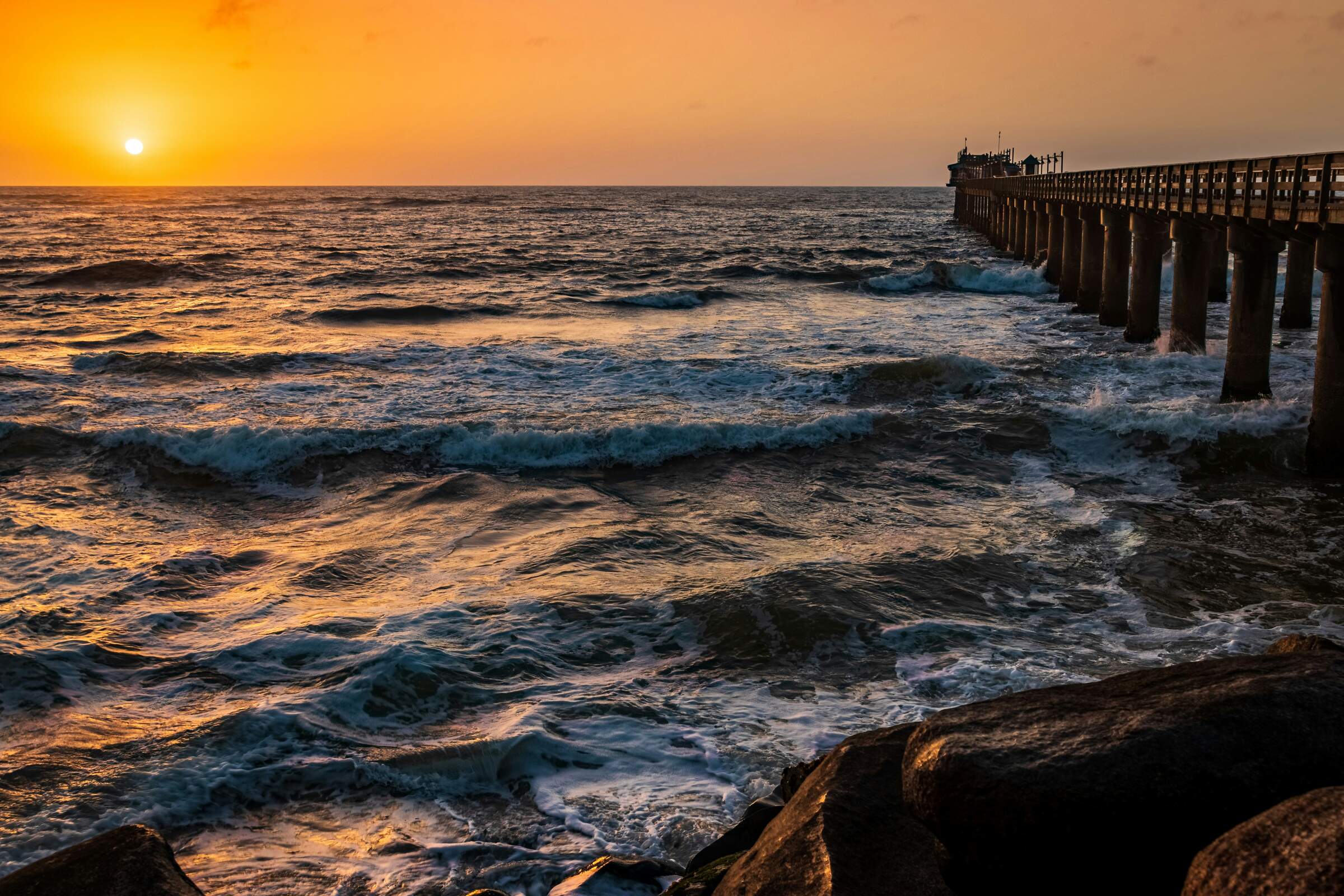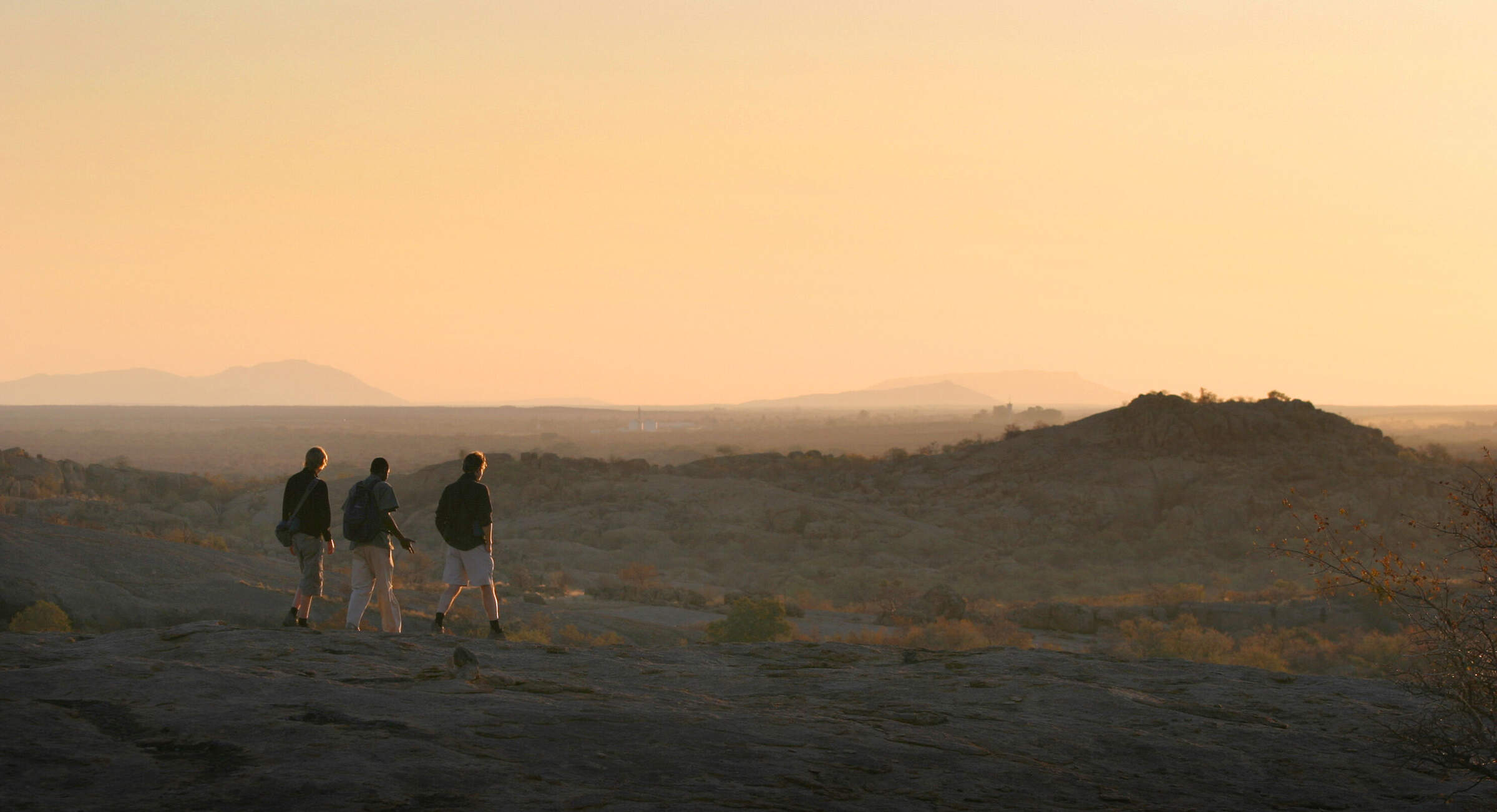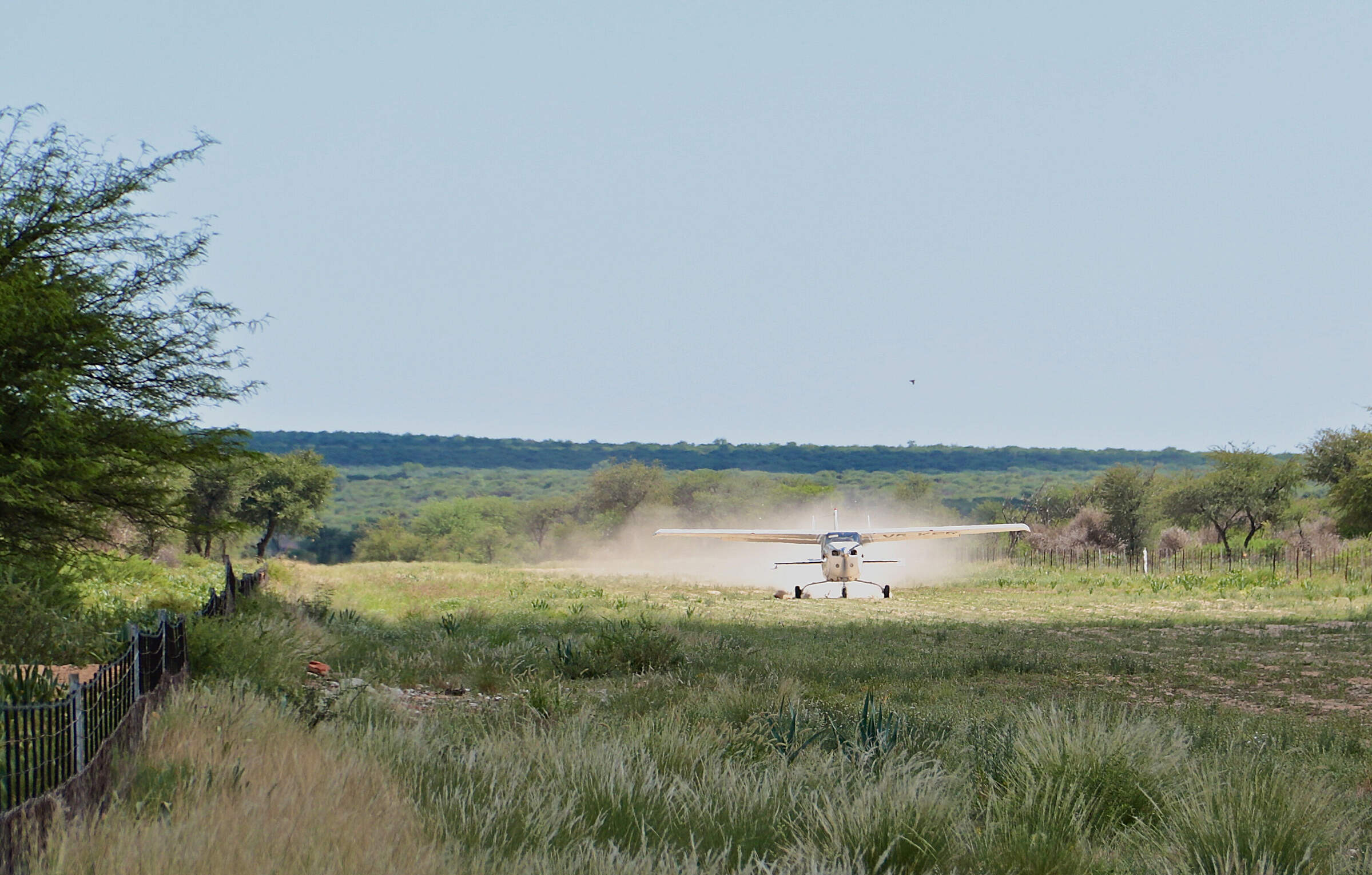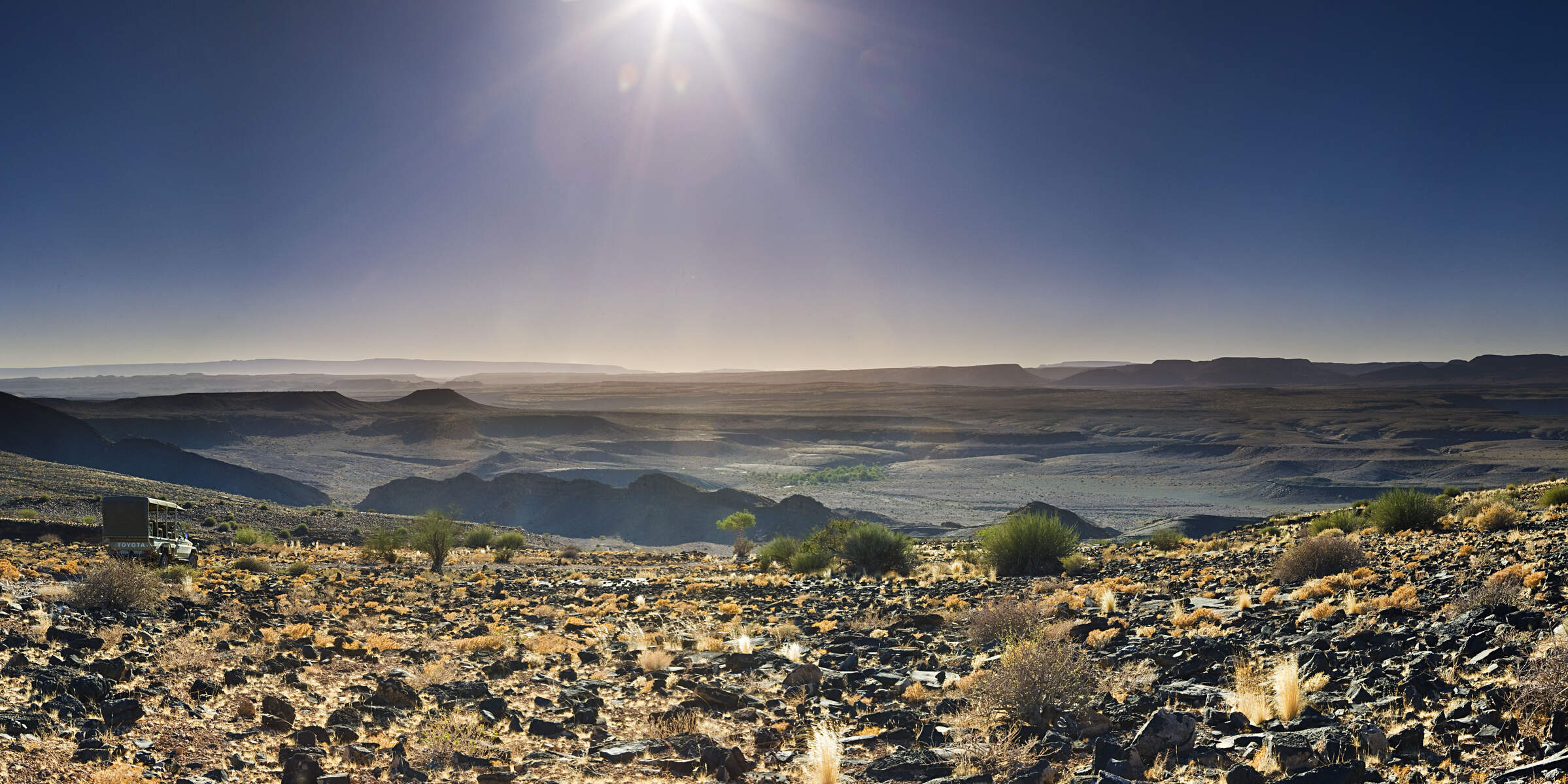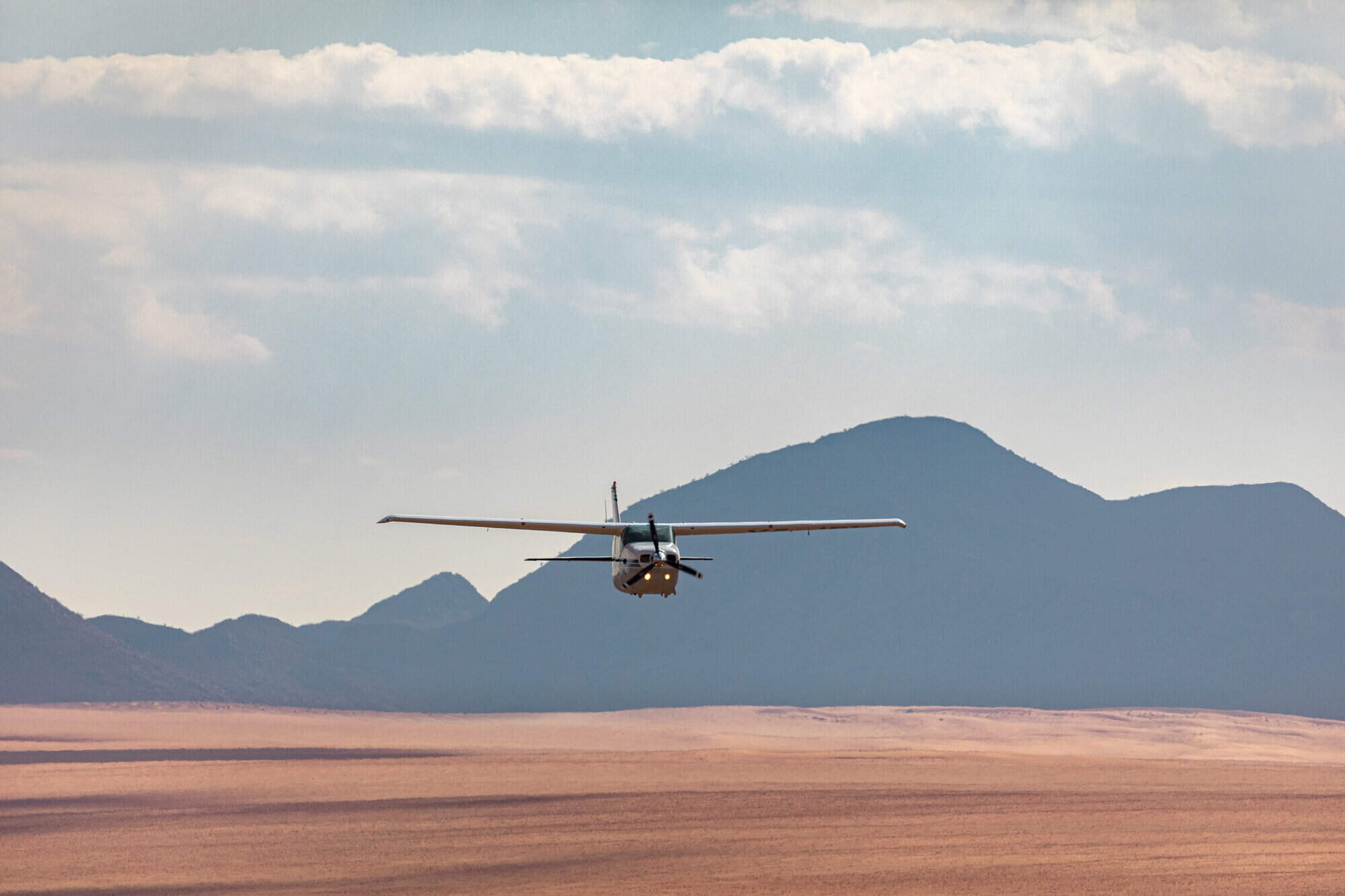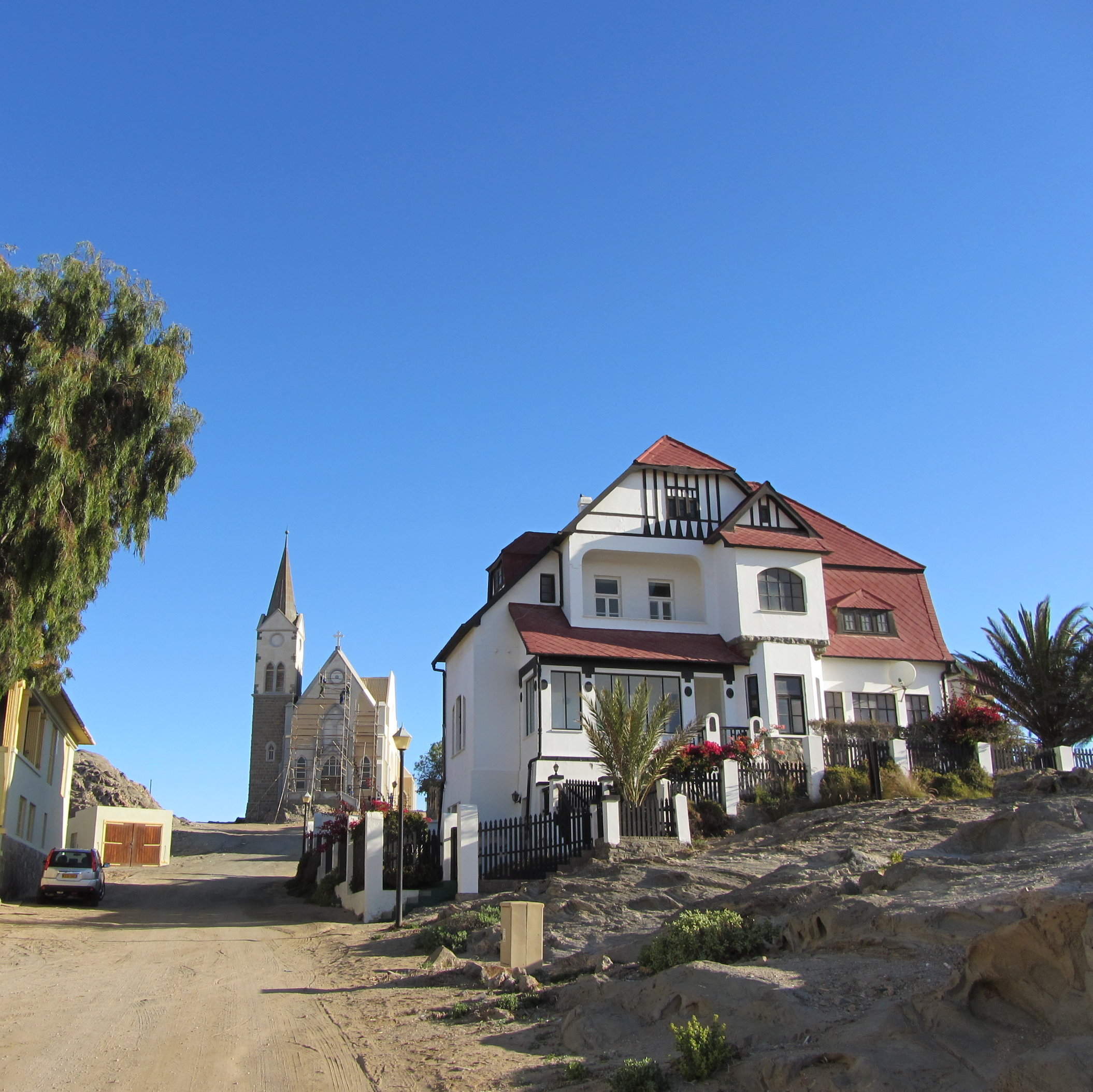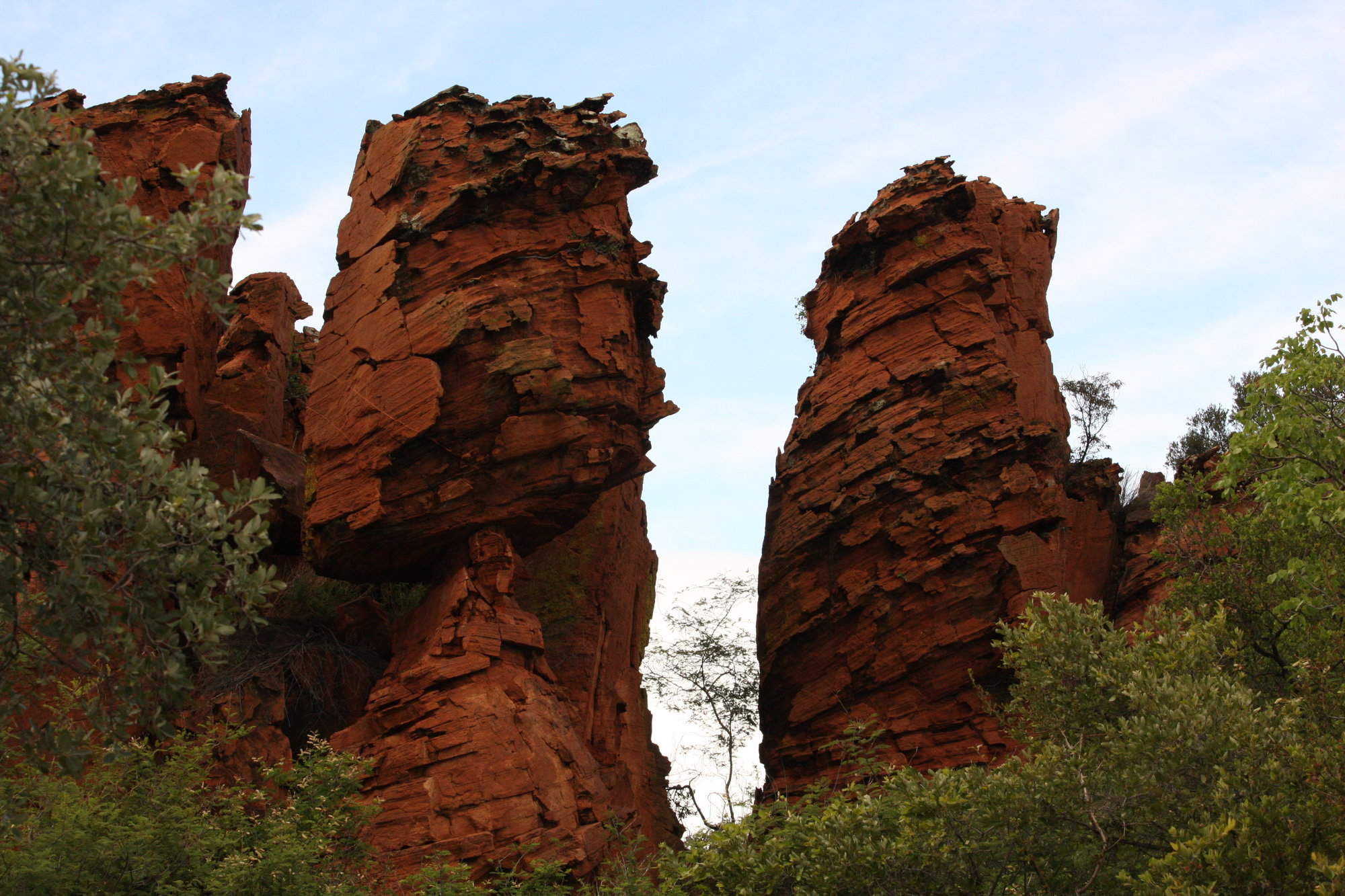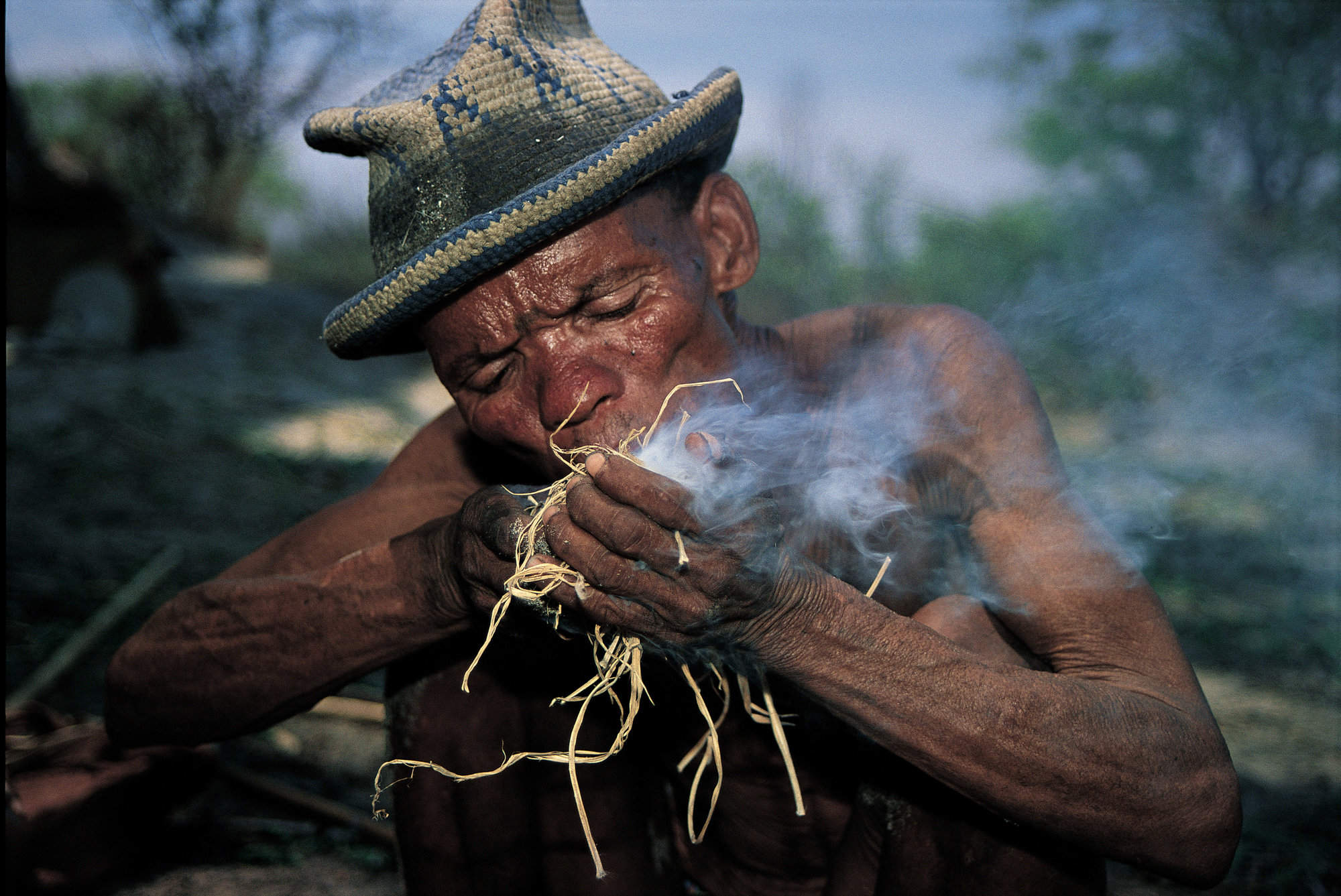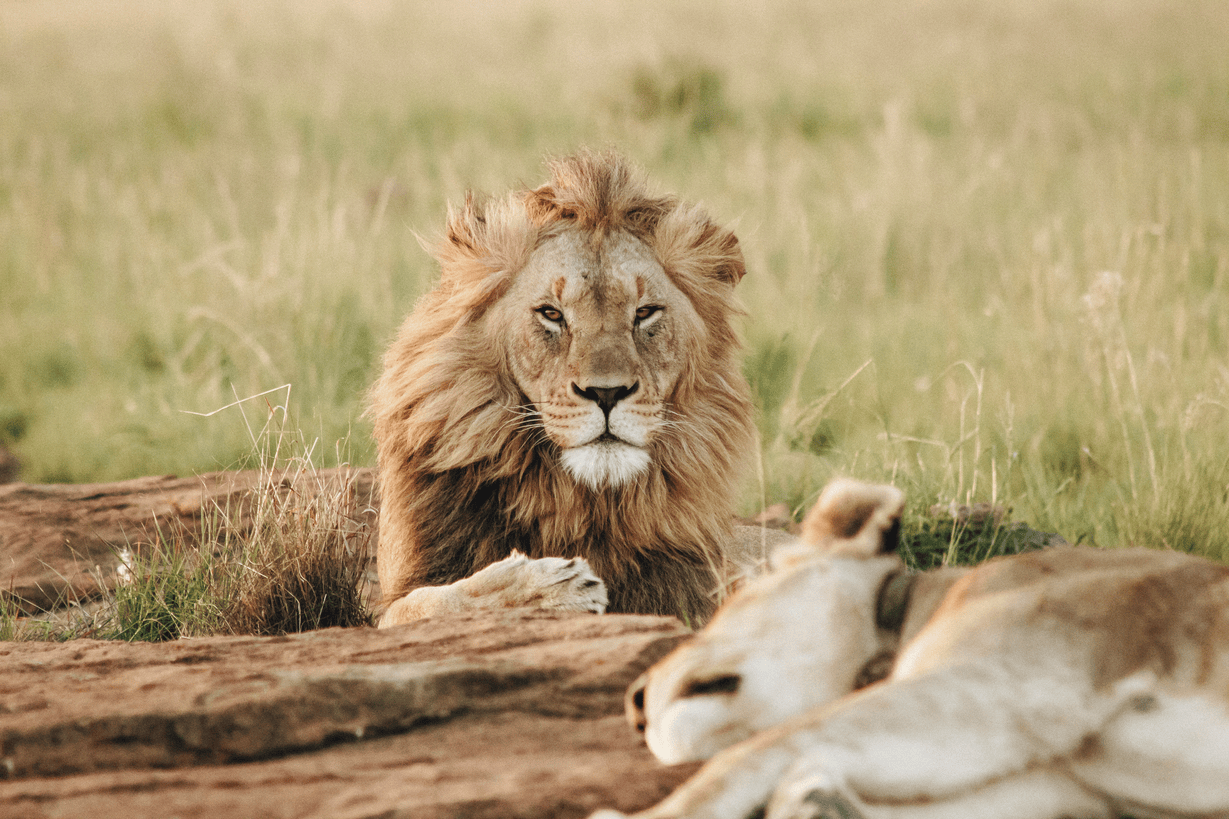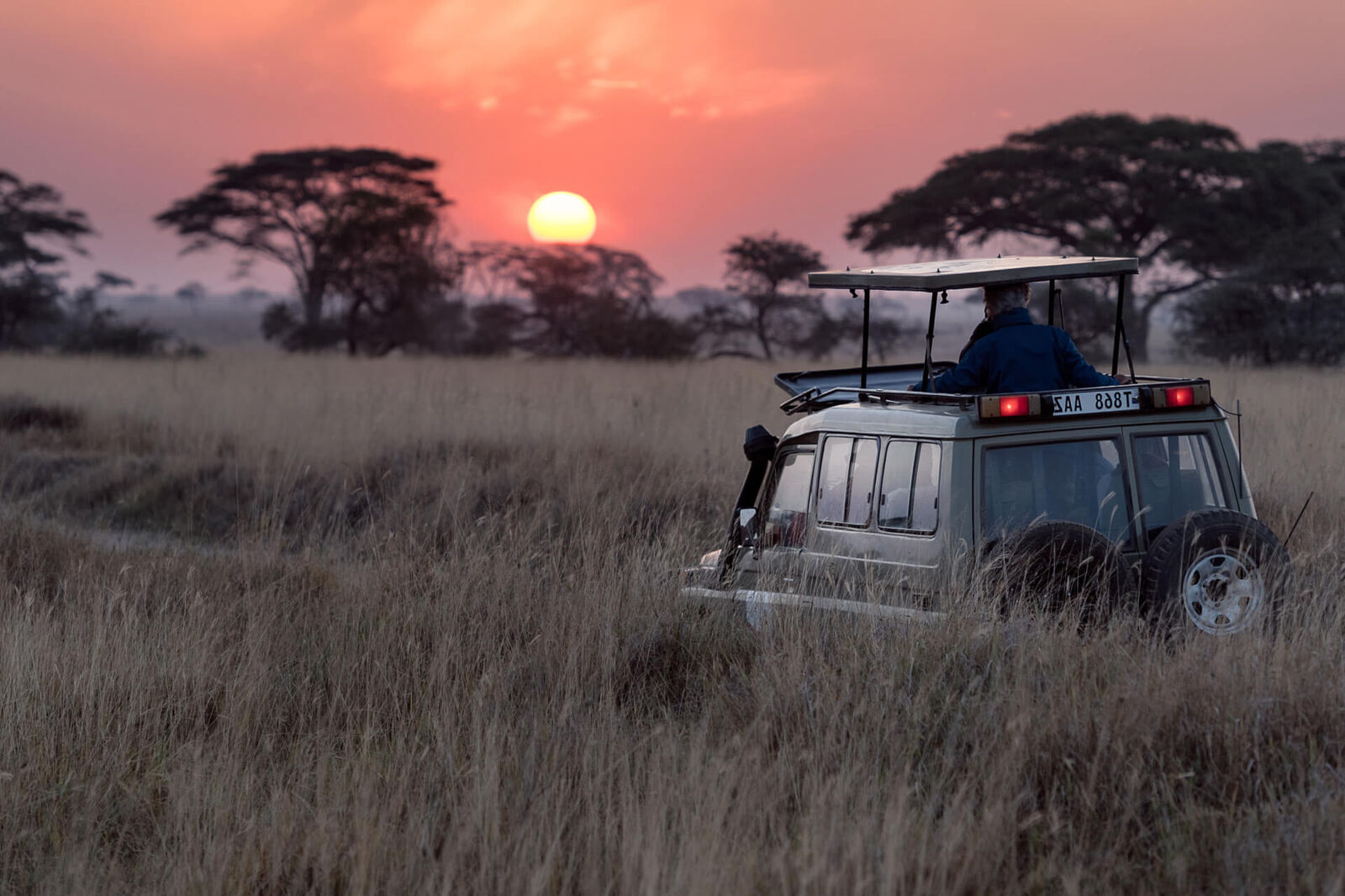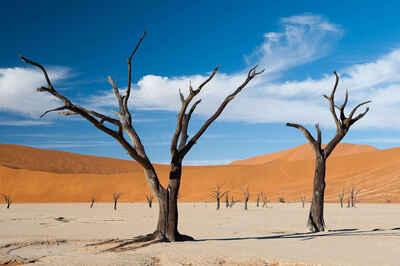
mystifying camel thorn trees in Deadvlei.
a great guide brings the desert to life.
Oryx in white socks
The Namib Sand Sea - a world heritage site.
nature' s untamed garden.
spectacular views beckon you outside
bask in the soft afternoon sun.
feast your eyes on stunning backdrops.
discover hidden rock pools and waterfalls
take your pick of hiking trails.
explore off the beaten track.
home to the Hartmann's mountain zebra
Quiver trees commonly grow on steep slopes.
Namib-Naukluft National Park
Namib-Naukluft National Park
Sculpted apricot dunes roll as far as the eye can see, the quintessential desert sands unbroken, unspoilt, untouched.
To visit the Namib-Naukluft is to marvel at nature’s grandeur; to visit Sossusvlei at dawn is the picture-postcard image come true.
Time spent in the Namib, one of the oldest deserts on earth, is richly rewarded. Time to savour the beauty of the landscape; time to take in the space and the silence; time just to be.
Climb up along the ridge of the dunes and surrender to the sheer scale of the place, an ant-like human among great waves of sand. Gaze at the skeleton trees on Dead Vlei, their ancient water source cut off half a millennium ago. Seek out the shade of Sesriem Canyon, perhaps taking a cooling dip in one of the natural pools. Or drift above it all in a hot-air balloon.
With all eyes on Sossusvlei, it’s easy to forget the wider picture of this national park: desert trails; the spectacular private NamibRand Nature Reserve; the Naukluft Mountains.
Starkly different, yet every bit as majestic as the desert, the mountains tower over ravines and verdant valleys. Statuesque aloes, euphorbias and quivertrees guard the rocks, where dassies cavort under the watchful eye of black eagles and lanner falcons. Crystal-clear springs trickle down to create verdant oases below. Movement might trigger a glimpse of mountain zebra, oryx or klipspringer. Humans are rare.
Yet these mountains are superb for hiking, from short walks to full-day excursions and more. Explore on horseback if you prefer, staying at traditional guest farms whose hosts have long welcomed visitors. You’ll even find a winery here.
And high above, as darkness falls over the mountains and the desert, Namibia’s magnificent night sky comes into its own: a captivating backdrop for a night spent under the stars.

Best safaris in Namib-Naukluft National Park
Embark on an unforgettable holiday in Namib-Naukluft National Park, a dramatic environment that’s home to some of Namibia’s rarest animals.
Enhance your adventures in this region with visits to Etosha, Damaraland or the Skeleton Coast.
Consider our suggested holidays, such as the Caracal Self-Drive Safari, Hoopoe Fly-In Safari, Flamingo Fly-In Safari, Bateleur Fly-In Safari, Black Wildebeest Self-Drive Safari, and the Dune Lark Fly & Drive Safari. Then – as all our trips are tailormade – contact us to create a safari that fits you perfectly.

Chongololo Self-drive Safari
21 days • 11 locations
WINDHOEK AIRPORT TO WINDHOEK AIRPORT
This self-drive safari focuses on the best walking experiences in Namibia. Get your boots ready for the apricot dunes of the Namib Desert and the ancient hills of Damaraland.
US$8,710 - US$9,620 per person

Caracal Self-drive Safari
14 days • 8 locations
WINDHOEK AIRPORT TO WINDHOEK AIRPORT
The quintessential Namibian self-drive adventure exploring the highlights from Sossusvlei and the Namib Desert to Damaraland’s wilderness and a safari in Etosha. A great mix of accommodation and excellent value.
US$3,190 - US$4,010 per person

Hoopoe Fly-in Safari
11 days • 4 locations
WINDHOEK AIRPORT TO WINDHOEK AIRPORT
This relaxed fly-in safari reveals Namibia at its best. Generous timings and a wide choice of activities help travellers to enjoy the best of the country’s most spectacular areas.
US$7,330 - US$9,960 per person

Black-faced Impala Guided Safari
13 days • 6 locations
WINDHOEK AIRPORT TO WINDHOEK AIRPORT
A unique mix of luxury and adventure in our original, and perhaps most varied, destination on a privately guided Namibian overland safari. Perfect for families, friends or couples travelling together.
US$13,020 - US$15,180 per person

Flamingo Fly-in Safari
6 days • 3 locations
WINDHOEK AIRPORT TO WINDHOEK AIRPORT
Short on time but big on experience, this luxury fly-in safari takes in Sossusvlei’s famous dunes and Etosha National Park’s captivating wildlife with stays at two excellent luxury lodges.
US$5,620 - US$6,560 per person

Bateleur Fly-in Safari
7 days • 4 locations
WINDHOEK AIRPORT TO WINDHOEK AIRPORT
Classic fly-in Namibian safari staying at excellent camps. Explore Sossusvlei’s dunes and track Damaraland’s desert elephants before a safari in Etosha. Incredible scenery, good wildlife viewing and authentic cultural experiences.
US$6,940 - US$8,930 per person
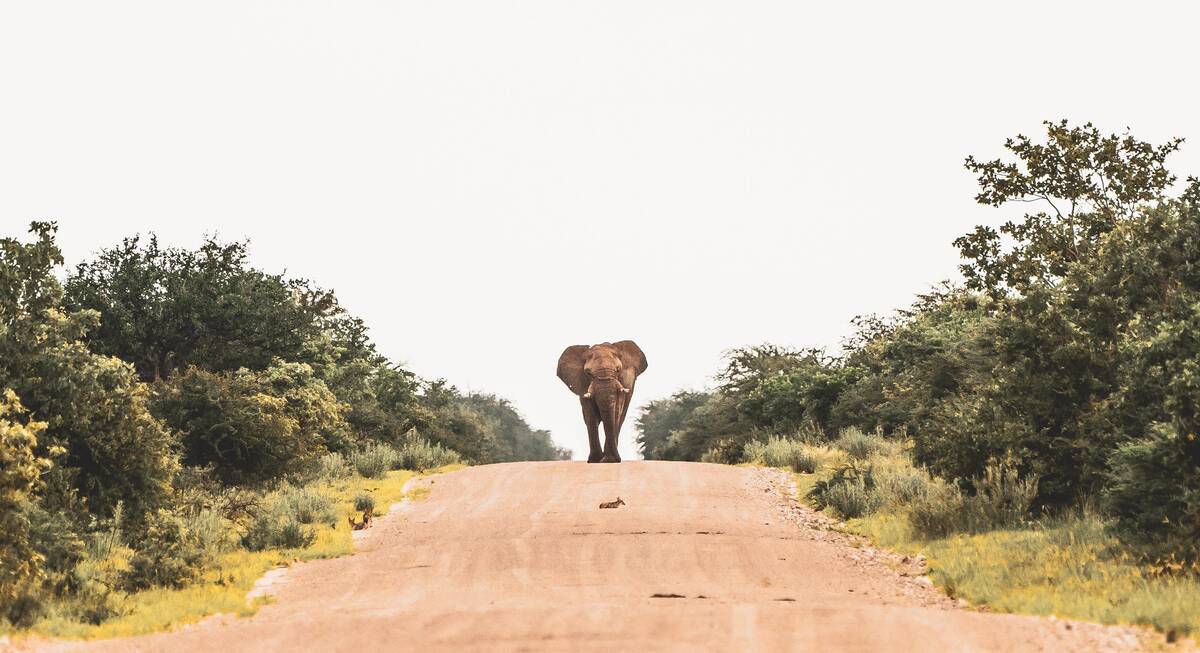
Black Wildebeest Self-drive Safari
19 days • 10 locations
CAPE TOWN AIRPORT TO WINDHOEK AIRPORT
Journey from South Africa’s cosmopolitan Cape Town to central Namibia’s Okonjima Nature Reserve during this self-driven safari. The route passes through a stunning variety of landscapes, offering access to this beautiful continent’s rich diversity.
US$4,020 - US$4,130 per person

Cape Fox Guided Safari
13 days • 7 locations
WINDHOEK AIRPORT TO WINDHOEK AIRPORT
A classic clockwise circuit around Namibia’s northern highlights with a private guide and vehicle. We can’t think of a better way to see more in this timeframe.
US$11,130 - US$12,960 per person
Most recent reviews of our safaris to Namib-Naukluft
Click below to browse all 1098 reviews from Namib-Naukluft National Park. All from our travellers; all are in full & unedited.
Arrived 14 Feb 2025, 20 nights
"My Feb 2025 trip"
Overall rating: Excellent
Arrived 24 Jan 2025, 10 nights
"My Jan 2025 trip"
Overall rating: Excellent
Arrived 15 Dec 2024, 16 nights
"My Dec 2024 trip"
Overall rating: Excellent
Arrived 7 Dec 2024, 12 nights
"My Dec 2024 trip to Namibia"
Overall rating: Excellent
Arrived 20 Oct 2024, 20 nights
"My Oct 2024 trip"
Overall rating: Excellent
Arrived 19 Oct 2024, 17 nights
"My Oct 2024 trip"
Overall rating: Excellent
Arrived 13 Oct 2024, 15 nights
"My Oct 2024 trip"
Overall rating: Excellent
Arrived 9 Oct 2024, 15 nights
"My Oct 2024 trip"
Overall rating: Excellent
Arrived 6 Oct 2024, 17 nights
"My Oct 2024 trip"
Overall rating: Excellent
Arrived 2 Oct 2024, 18 nights
"My Oct 2024 trip"
Overall rating: Excellent
Where to stay in Namib-Naukluft National Park
Namib-Naukluft National Park offers diverse accommodation options, from luxury lodges to rustic retreats, offering the superb mountain and desert settings for which this park is renowned.
Perfect for exploring Sossusvlei's iconic dunes and the park's vast wilderness, the options run from secluded lodges with panoramic views to eco-friendly camps or charming farm stays. Each provides a unique experience, whether you're seeking adventure, relaxation, or a blend of both.
Ask us for more details of what's where, and what's likely to suit you best.

Kulala Desert Lodge
The comfortable Kulala Desert Lodge offers fantastic views of the Namib and a private gate to the Namib-Naukluft Park - a bonus on guided excursions.

Hoodia Desert Lodge
The owner-run Hoodia Desert Lodge offers a high standard of accommodation, delicious food and excellent service in a stunning, peaceful setting just 22km from Sesriem.

BullsPort Lodge & Farm
A traditional Namibian farm, BullsPort offers warm hospitality and a genuine rural experience, with excellent hiking and horseriding.

Sossus Dune Lodge
One of only two properties inside the Namib Naukluft Park, Sossus Dune Lodge has a superb location, for visiting the dunes.

Desert Homestead
With great-value accommodation in a lovely setting, Desert Homestead is a great base for exploring Sossusvlei.

Zebra River Lodge
Zebra River Lodge offers a range of hikes around the Tsaris Mountains from a comfortable and homely base.

Little Kulala
A high-end lodge with spectacular views, Little Kulala, makes a great base for visits to Sossusvlei or a balloon ride over the Desert.

Rostock Ritz
The igloo-style chalets at Rostock Ritz offer exceptional desert views and make a convenient stopover between Swakopmund & Sossusvlei.

Barkhan Dune Retreat
Barkhan Dune Retreat is a welcoming lodge close to the impressive Spreetshoogte Pass, majors on hiking and relaxation.

Sossusvlei Lodge
Sossusvlei Lodge is one of the larger options in this area. However, it occupies a convenient location next to the Sesriem gate into the Namib-Naukluft Park.

Namib Outpost
About 30km from the gate to Sossusveli, Namib Outpost is a great base for exploring the dunes and surrounding attractions.

Dead Valley Lodge
Dead Valley Lodge is inside the Namib-Naukluft National Park, affording guests almost unprecedented access to the dunes.

Desert Camp
Desert Camp is an economical option for independent travellers who want to self-cater, and is well situated for access to Sossusvlei.

Desert Quiver Camp
Desert Quiver Camp is an economical option self-catering, well located for access to Sossusvlei.

Elegant Desert Lodge
Elegant Desert Lodge can be used as a base to visit Sossusvlei. It offers comfortable accommodation and facilities in the desert.

Corona Guest Farm
In central Namibia, north-east of the Namib-Naukluft, Corona Guest Farm offers a traditional farm stay and rugged hiking.

Namib Desert Lodge
Namib Desert Lodge is a good budget option in the Namib-Naukluft although, it is further from Sossusvlei than we'd typically suggest.

Sonop
Away from the hustle and bustle of the area immediately surrounding Sossussvlei, Sonop offers a luxurious stay in a remote part of the Namib Desert.

Camp Sossus
Camp Sossus is a offers top notch guiding in a remote wilderness area of the Naukluft Mountains with easy access to the famous dunes of Sossusvlei.

Desert Hills Camp
Conveniently located for the renowned dunes of Sossusvlei Desert Hills Glamping Camp offers a simple but comfortable tents in picturesque surroundings.

Le Mirage Lodge
Le Mirage Resort and Spa offers accommodation and a range of massage and beauty treatments in a Moroccan-style building in the desert.

Desert Grace
A stylish offering giving access to the famous dunes in the Namib-Naukluft National Park as well as to activities on a private nature reserve.

The Nest
Designed to emulate the appearance of a sociable weaver nest the opulent Nest at Sossus is arguably the most exclusive private property in the Sossuvlei area.
Our traveller’s wildlife sightings in Namib-Naukluft National Park
The Namib-Naukluft National Park offers a unique wildlife experience, showcasing species adapted to its harsh desert environment.
Relatively common sightings in the park include oryx, springbok, wildebeest, giraffes and meerkats, while pangolin and aardvark, although present, are more elusive. Predators such as jackals and both brown and spotted hyenas are found here, while klipspringers and rock hyrax thrive in the mountains.
Hartmann's mountain zebra, a subspecies uniquely suited to the park's rugged terrain, is a particular highlight - commonly seen here, but something of a rarity. These and other species contribute to the park's rich biodiversity, making it an unusual but exciting destination for wildlife enthusiasts.
Click on a species below for more information on the top locations in Namib-Naukluft for wildlife sightings, or see our interactive map showing the best locations for individual wildlife species in Namibia. Read how this wildlife survey works.

86% success

37% success

24% success

12% success

7% success

7% success

3% success

0% success

0% success

0% success

0% success
When to go to Namib-Naukluft National Park
In Namib-Naukluft National Park, seasons are defined by rainfall.
The rainy season (short rains in November and then main rains from January to April) brings thunderstorms and a burst of desert life. May to October is the dry season, with clear skies and warm temperatures.
Sossusvlei's red dunes are accessible year-round, offering stunning views and a base for spectacularly clear night skies. The Naukluft Mountains offer hiking, from short scenic routes to longer, more challenging treks - particularly pleasant in winter. Wildlife viewing is best during the dry season when animals stay close to water sources. Coastal areas offer excellent bird-watching, particularly during migratory seasons.
Click on the months below for a detailed guide on traveling to Namib-Naukluft National Park:
Jan
Feb
Mar
Apr
May
Jun
Jul
Aug
Sep
Oct
Nov
Dec
Namib-Naukluft National Park in January
January marks the start of the main rainy season. The Sossusvlei area may experience localised thunderstorms, creating a striking contrast against the red dunes. The Tsauchab River might flow, running through the usually dry Sesriem Canyon and out onto the desert sands. The landscape begins to green, offering a refreshing change and a beautiful backdrop. Many birds in the park are in full breeding plumage, their numbers increased by the arrival of summer migrant species. The Naukluft Mountains may see more reliable rains, bringing on nutritious vegetation for mountain zebras, springbok and oryx to feed on.
- Variable weather: hot days, possible rain
- Occasional localised thunderstorms
- Desert blooms if rain has fallen
- Wildlife dispersed, away from waterholes
- Few tourists, lower rates for accommodation
Our view
This is not a great time to visit
Weather in January
Namib-Naukluft National Park in February
February is often the wettest month in Namib-Naukluft National Park. The Sossusvlei area may experience short, spectacular thunderstorms, occasionally generating flash floods in ephemeral rivers. These events can temporarily transform the usually dry landscape, creating stunning photographic opportunities. The park's vegetation is at its greenest, with insects and smaller creatures uniquely adapted to the desert more easily seen. In the Naukluft Mountains, heavier rains can make some hiking trails more challenging but also more rewarding with lush vegetation. Wildlife viewing in open areas like Sossusvlei might be trickier due to the abundance of water and food allowing animals to disperse widely.
- Hot days, chance of rain and thunderstorms
- Desert vegetation lush if rains occurred
- Dramatic skies as backdrop for photographs
- Wildlife still dispersed across the park
- Low tourist numbers, great for solitude
Our view
This is not a great time to visit
Weather in February
Namib-Naukluft National Park in March
March usually sees the main rains tailing off in Namib-Naukluft National Park. The Sossusvlei area may still experience occasional afternoon thunderstorms, but these decrease in frequency as the month progresses. The landscape is often at its most vivid, with the red dunes contrasting beautifully against green vegetation, and often dry gravel plains now covered in waving grasses. This creates excellent photographic opportunities, especially at sunrise and sunset. The Naukluft Mountains may still have some water in streams, making it a good time for hiking. Wildlife viewing can be challenging as animals are widely dispersed, but patient observers may be rewarded with sightings of desert-adapted species.
- Weather becoming drier as month progresses
- Desert landscapes starting to dry out
- Animals looking healthy after rainy months
- Wildlife viewing improving in drier areas
- Few tourists, peaceful park experience
Our view
A good time to visit, with pros & cons
Weather in March
Namib-Naukluft National Park in April
April typically brings dry weather to Namib-Naukluft National Park, with a decreasing chance of rain. Temperatures begin to fall, making it more comfortable for activities like hiking in the Naukluft Mountains or climbing dunes in Sossusvlei. The park often remains verdant from the recent rains, with animals in fantastic condition. This is an excellent time for photography, with clear air and spectacular landscapes. Stargazers will enjoy increasingly clear night skies as the month progresses. Wildlife viewing may still be challenging in some areas as water and food remain in plentiful supply, allowing animals to roam widely. Birdwatching opportunities along the coast, especially Sandwich Harbour, remain impressive.
- Cooler nights, pleasant daytime temperatures
- Landscapes transitioning to golden hues
- Migratory birds begin to leave the park
- Wildlife easier to spot around water sources
- Easter can bring a surge in visitor numbers
Our view
A good time to visit, with pros & cons
Weather in April
Namib-Naukluft National Park in May
By May, Namib-Naukluft National Park is usually drying out fast. If rains have been good, the land remains green, creating a striking contrast with the red dunes of Sossusvlei. Wildlife starts to congregate around more permanent water sources, improving viewing opportunities. The air quality and clarity can be amazing, making this an ideal month for photography, especially in iconic locations like Deadvlei. Typical days are warm with crisp, clear mornings and blue skies, perfect for activities like hiking in the Naukluft Mountains or hot air ballooning over Sossusvlei. Evenings are cool, ideal for stargazing. At the coast, seal pups begin to take to the water and are playful around kayakers. May's good-value rates, increasingly good wildlife sightings, and crystal-clear air make it one of the best months to visit the park.
- Dry, warm days and cool nights
- Excellent photography conditions
- Wildlife returning to waterholes
- Ideal for hiking in Naukluft Mountains
- Moderate visitor numbers, good value
Our view
A very good time to visit
Weather in May
Namib-Naukluft National Park in June
Namib-Naukluft National Park is dry in June, with cloudless blue skies. Days are warm and dry, while nights can be cold, especially in desert areas like Sossusvlei. Early morning game drives or hikes require warm clothing. Wildlife viewing in areas like the Naukluft Mountains improves as animals are more active in cooler weather and seek out permanent water sources. The park isn't busy yet, allowing for a more secluded experience. Photographers benefit from superb air clarity and minimal dust of the early dry season. The contrast between the now-dry landscape and the vivid red dunes is striking, especially in early morning or late afternoon light. June is an excellent time for activities like sandboarding or quad biking in the dunes, as well as scenic flights over the park.
- Clear skies, cold nights and mornings
- Perfect conditions for stargazing
- Wildlife viewing productive at waterholes
- Great for dune climbing and desert walks
- Moderate accommodation rates available
Our view
A very good time to visit
Weather in June
Namib-Naukluft National Park in July
July in Namib-Naukluft National Park offers usually warm daytime temperatures and excellent wildlife sightings. The clear skies and dry conditions make for great photographs, especially of iconic locations like Sossusvlei and Deadvlei. Nights can be very cold, particularly in the desert areas, so warm clothing is essential for early morning activities. As vegetation continues to dry, animals congregate near water sources, improving wildlife viewing opportunities. The Naukluft Mountains may offer sightings of mountain zebra, gemsbok and other hardy desert species. This is a popular time to visit, so book accommodation and activities in advance. Consider seeing the park's vast landscapes and unique geological features by land and by air.
- Dry days, crisp nights ideal for stargazing
- Peak season for Sossusvlei visits
- Cool temperatures for hiking
- Popular time for hot air balloon rides
- Higher rates, book accommodations early
Our view
Fantastic: the very best time to visit
Weather in July
Namib-Naukluft National Park in August
August is the height of winter in Namib-Naukluft National Park. Expect cloudless skies and warm sun during the day, but nights can drop to freezing in desert areas like Sossusvlei. Dress in layers for early morning dune climbs or hikes. The landscape appears stark and harsh, emphasising the park's dramatic geology and beautiful colours. Look out for unique desert creatures, such as the toktokkie beetle standing on his head to catch dew droplets in this dry time. This is the most popular time to visit, especially for families, so book early. Activities like hot air ballooning over Sossusvlei are particularly popular now, offering stunning views of the desert landscape in the crisp morning air.
- Dry climate, warm days and cold nights
- Peak season for park visits and activities
- Sossusvlei and Deadvlei highly photogenic
- Sandboarding and quad biking popular
- Advance booking essential for lodges
Our view
Fantastic: the very best time to visit
Weather in August
Namib-Naukluft National Park in September
September in Namib-Naukluft National Park brings blue cloudless skies and the occasional windy day. As the month progresses, days and nights get warmer. The air becomes dustier, creating atmospheric conditions for photography, especially during golden hour at Sossusvlei and Deadvlei. Desert animals congregate around remaining water and food sources. It's a popular time for visitors, particularly safari enthusiasts. The contrast between the parched landscape and the vivid red dunes is at its most striking. Humpback and Southern Right whales can be spotted off the coast whilst on a marine cruise.
- Warming temperatures, remaining dry
- Excellent month for wildlife viewing
- Naukluft Mountain hikes highly enjoyable
- Whales can be seen along the coast
- High season rates, popular travel time
Our view
Fantastic: the very best time to visit
Weather in September
Namib-Naukluft National Park in October
October is usually the hottest and driest month in Namib-Naukluft National Park. Temperatures can exceed 40°C/104°F, especially in the Sossusvlei area. The end of the dry season sees wildlife watching at its best, particularly around water sources. The stark beauty of the desert is at its peak, with the red dunes of Sossusvlei standing out dramatically against the cloudless sky. This is an excellent time for photography, with dust haze making for spectacular sunsets. Activities like early morning balloon rides or kayaking on cool waters are popular. October is popular among wildlife enthusiasts, but visitor numbers can decrease towards the end of the month, allowing for last-minute bookings.
- Hot and dry, true desert conditions
- Prime time for viewing desert-adapted wildlife
- Sossusvlei dunes at their most dramatic
- Scenic flights offer spectacular views
- Peak rates, book well in advance
Our view
A very good time to visit
Weather in October
Namib-Naukluft National Park in November
November in Namib-Naukluft National Park can be unpredictable. Early in the month, conditions are often still hot and dry, similar to October. As the month progresses, there's an increasing chance of afternoon thunderstorms, particularly in the Naukluft Mountains. These storms can create spectacular photographic opportunities, especially when lightning illuminates the desert landscape. Any rain quickly brings new life, with desert-adapted plants springing up rapidly. This is an excellent time for birdwatchers, with migrant species arriving. Wildlife may begin to disperse if rains come, making game viewing more challenging but animals look healthy, with shiny coats, due to the increase in food. The changing conditions create a dynamic environment, offering visitors a unique perspective on the desert ecosystem.
- Variable weather as rainy season starts
- Possibility of dramatic desert storms
- Landscapes may start to green
- Wildlife dispersing if early rains fall
- Shoulder season, good value for visitors
Our view
A good time to visit, with pros & cons
Weather in November
Namib-Naukluft National Park in December
December is often a dry gap between the short November rains and the main rains in January in the Namib-Naukluft National Park. Occasionally the park experiences dramatic afternoon thunderstorms. These rains transform the landscape, with dormant plants springing to life and dry gravel plains quickly turning green. The contrast between the green vegetation and red dunes creates stunning visuals. Many animals give birth during this time, offering chances to see young wildlife. Birdlife is abundant, with many species in breeding plumage. The holiday season can make the park busier, especially around Sossusvlei, so early bookings are advisable.
- Hot days, possible afternoon showers
- Desert may bloom with early rains
- Migratory birds return to coastal areas
- Christmas brings increase in local tourism
- Mix of green and golden desert vistas
Our view
A good time to visit, with pros & cons
Weather in December
Namib-Naukluft National Park: In detail
Namib-Naukluft National Park
If your picture of the desert includes enormous Lawrence-of-Arabia dunes, vast gravel plains, towering mountain ranges and deep sculptured canyons, then your image is of the Namib-Naukluft National Park.
Covering almost 50,000km², it is one of the largest conservation areas in Africa and protects one of the oldest deserts on earth (South America’s Atacama Desert being the other contender for this title). The Namib Desert’s scenery is stunning, and its wildlife fascinating; you just need to make the time to observe it. It’s easy to explore the contrasting landscapes by yourself. The roads are spectacular, so make sure you leave plenty of time to stop, take photographs and have a picnic surrounded by space and silence.
Jutting out into the desert are the impressive Naukluft Mountains. Whilst the high plateaux and mountainsides tend to be rocky and sparsely vegetated, the ravines and valleys are verdant. This area receives few visitors but is peaceful, beautiful and ideal for serious hiking.
The Naukluft Mountains
Geology of the Naukluft Mountains
The uniqueness of the area stems from its geology as much as its geographical position. Separated from the rest of the highlands by steep, spectacular cliffs, the Naukluft Mountains form a plateau. Underneath this, to a height of about 1,100m, is mostly granite. Above this base are alternating layers of dolomites and shales, with extensive deposits of dark limestone, rising to about 1,995m. Over the millennia, rainwater has gradually cut into this massif, dissolving the rock and forming steep kloofs, or ravines, and a network of watercourses and reservoirs – many of which are subterranean. The name Naukluft, which means "narrow ravine", is apt for the landscape.
Where these waters surface, in the deeper valleys, there are crystal-clear springs and pools – ideal for cooling dips. Often these are decorated by impressive formations of smooth tufa – limestone that has been re-deposited by the water over waterfalls.
Flora and fauna of the Naukluft
Down in the deeper kloofs, where there are permanent springs, the vegetation is totally different, with many more lush, broad-leaf species. Wild, cluster and sycamore figs are particularly prevalent, whilst you should also be able to spot camelthorn, buffalo thorn, wild olive and shepherd’s trees.
The Naukluft has many animals, including large mammals, though all are elusive and difficult to spot. Hartmann’s mountain zebra, oryx, kudu and klipspringer are occasionally seen fleeing over the horizon (usually in the far distance). Steenbok and the odd sunbathing dassie are equally common, and springbok, warthog and ostrich occur, but are more often found on the plains around the mountains. The mountains should be a classic place for leopard and the smaller cats – as many small mammals are found here – but these are almost never seen.
Over 200 species of birds have been recorded here, and a useful annotated checklist is available from the park office. The Naukluft are at the southern limit of the range of many species of the northern Namib – Rüppell’s parrot, rosy-faced lovebirds and Monteiro’s hornbill all occur here, as do species typical of the south like the Karoo robin and chat. In the wetter kloofs, watch for species that you wouldn’t find in the drier parts of the park, like the water-loving hamerkop, brubru and even African black ducks. Raptors are usually seen soaring above. Black eagles, lanner falcons, augur buzzards and pale chanting goshawks are common.
Sesriem and Sossusvlei area
Sesriem and Sossusvlei lie on the Tsauchab River, one of two large rivers (the other being the Tsondab, further north) that flow westward into the great dune field of the central Namib, but never reach the ocean. Both end by forming flat white pans dotted with green trees, surrounded by spectacular dunes – islands of life within a sea of sand.
Sesriem Canyon
About 4km from Sesriem, following the signs left as you enter the gates, is Sesriem Canyon. This is a narrow fissure in the sandstone, 30m deep in places, carved by the Tsauchab River. It was used by the early settlers, who drew water from it by knotting together six lengths of hide rope (called riems). Hence it became known as ses riems.
For some of the year, the river’s bed is marked by pools of blissfully cool water, reached via an easy path of steps cut into the rock. It’s a place to swim and relax – perfect for the heat of the day. At other times, though, the water can be almost stagnant and definitely not a place to bathe – except for the large frogs that are marooned in these pools. It’s also worth following the watercourse 500m upriver from the steps, where you’ll find it before it descends into the canyon – another great place to bathe at times.
Sossusvlei area
The road from Sesriem to Sossusvlei is soon confined into a corridor, flanked by huge dunes. Gradually, this narrows, becoming a few kilometres wide. This unique parting of the southern Namib’s great sand sea has probably been maintained over the millennia by the action of the Tsauchab River and the wind.
Although the river seldom flows, note the green camelthorn, Vachellia erioloba, which thrives here, clearly indicating permanent underground water. Continuing westwards, the present course of the river is easy to spot parallel with the road. Look around for the many dead acacia trees that mark old courses of the river, now dried up. Some of these have been dated at over 500 years old.
Dead Vlei is an old pan with merely the skeletons of trees left – some over 500 years old. Many consider it to be more starkly beautiful than Sossusvlei.
Sossusvlei & Nara Vlei is as far as the pans extend. Beyond here, only tall sand dunes separate you from the Atlantic Ocean. Most years, the ground here is a flat silvery-white pan of fine mud that has dried into a crazy-paving pattern. Upon this are huge sand mounds collected by nara bushes, and periodic feathery camelthorn trees drooping gracefully. All around the sinuous shapes of the Namib’s (and some claim the world’s) largest sand dunes stretch up to 300m high. It’s a stunning, surreal environment.
Perhaps once every decade, Namibia receives really torrential rain. Storms deluge the Naukluft’s ravines and the Tsauchab sweeps out towards the Atlantic in a flash flood, surging into the desert and pausing only briefly to fill its canyon.
Floods so powerful are rare, and Sossusvlei can fill overnight. Though the Tsauchab will subside quickly, the vlei remains full. Miraculous lilies emerge to bloom, and the bright yellow devil thorn flowers (Tribulus species) carpet the water’s edge. Surreal scenes reflect in the lake, as dragonflies hover above its polished surface. Birds arrive and luxuriant growth flourishes, making the most of this ephemeral treat.
These waters recede from most of the pan rapidly, concentrating in Sossusvlei, where they can remain for months. While they are there, the area’s birdlife changes radically, as waterbirds and waders will often arrive, along with opportunist insectivores. Meanwhile, less than a kilometre east, over a dune, the main pan is as dry as dust, and looks as if it hasn’t seen water in decades.
Individual dunes afford superb views across this landscape, with some of the best from “Big Daddy”. It’s a strenuous climb to the top, looking out across to “Big Mama”, but the climb, followed by a long walk, are rewarded by the spectacle of Dead Vlei laid out below – and the fun of running down the slip-face to reach it.
History of the Namib-Naukluft National Park
Most recently, in 1986, the rest of Diamond Area No 2 was incorporated, taking the park’s southern boundary as far south as the main road to Lüderitz, and increasing its area to its present size of 49,768km2 – larger than Switzerland, or about the same as Maryland and New Jersey combined.
Natural environment of the Namib-Naukluft
Sand Dunes
Dunes are everybody’s idea of a desert, and generally thought of as being bare and lifeless. Whilst this is not inaccurate for many deserts, the Namib is sufficiently old for endemic species to have evolved. Various grasses grow on some of the more stable dunes, but most of the vegetable matter comes from wind-blown detritus. This collects at the bottom of the dunes, to be eaten by fish-moths (silver-fish), crickets and the many tenebrionid beetles – or tok tokkies, as they are known – near the base of the food chain. Particular tenebrionid species occur in specific environments, with those in the coastal fog belt adapting ingeniously to harness the available moisture.
These then provide food for spiders, geckos, lizards and chameleons which, in turn, fall prey to sidewinder snakes. Rare Grant’s golden moles eat any small beetles or larvae that they can catch, and birds are mobile enough to move in and out of the dunes in search of the smaller animals. Endemic to this region is the dune lark, which is seldom found outside the dune areas.
River Valleys & Pans
The river valleys that run through the Namib are linear oases. Though dry on the surface, their permanent underground water sustains trees and bushes, like the camelthorn, Vachellia erioloba, and nara melon, Acanthosicyos horrida, found in the middle of the great dune sea at Sossusvlei. Other common river-valley trees include the ana tree Faidherbia albida, the shepherd’s tree, Boscia albitrunca, easily identified by its white trunk; the wild green-hair tree, Parkinsonia africana and the marvellously weeping false ebony, Euclea pseudebenus.
The lush vegetation found in these valleys makes them a favourite for numerous insects and birds, as well as larger mammals like oryx, kudu and springbok. These are the most likely areas to find nocturnal cats from leopard to caracal, especially where the rivers cut through mountains rather than dunes.
Gravel Plains
Throughout the desert, and especially north of the Kuiseb River, the Namib has many expansive, flat plains of rock and stone. These come alive during the rains, when they will quickly be covered with tall thin grass and creeping yellow flowers, attracting herds of oryx, springbok and even Hartmann’s mountain zebra. During drier times there are fewer large mammals around, but still at night black-backed jackal, aardwolf and the occasional aardvark forage for termites, while bat-eared and Cape foxes scavenge for insects, reptiles, and anything else edible. Spotted hyena and even the rare brown hyena are sometimes recorded here. Both leave distinctive white droppings, but only the sociable spotted hyenas make such eerie, mournful calls.
Resident larger birds include ostrich, secretary birds, Rüppell’s korhaan and Ludwig’s bustard, while enthusiastic birdwatchers will seek the pale, apparently insignificant Gray’s lark (amongst other larks), which is endemic to the gravel plains of the Namib.
Inselbergs & Mountain Outcrops
Throughout the Namib there are mountains, often of granite or limestone. Some, like many between Sesriem and Sossusvlei, have become submerged beneath the great dune sea. Others, especially north of the Kuiseb River, jut up through the flat desert floor like giant worm casts on a well-kept lawn. These isolated mountains surrounded by gravel plains are inselbergs (from the German for "island-mountain") – and they have their own flora and fauna. Euphorbia, acacia, commiphora, zygophyllum and aloe species are common, whilst the succulent lithops (often called living rocks, for their pebble-like shape) occur here, though less frequently.
Many inselbergs are high enough to collect moisture from morning fogs, which sustain succulents and aloes, and with them whole communities of invertebrates. Temporary pools in crevices can be particularly interesting, and there’s a whole microcosm of small water creatures that lay drought-resistant eggs. These survive years of desiccation, to hatch when the pools do finally fill.
The open land affords perfect perches for raptors: lappet-faced vultures, greater kestrels and red-necked falcons are typical of this environment. Also watch for sandgrouse, which congregate at water around dusk and dawn, and other well-camouflaged foraging birds.
The Gamsberg Plateau
The NamibRand Nature Reserve
To do justice to this region and explore the mountains and the dunes properly, stay for three nights. With more time, it's best to split your stay between Sesriem and either the Naukluft Mountains or the NamibRand Reserve.
Map of Namib-Naukluft National Park
Choices for where to stay in Namib-Naukluft National Park

Namib-Naukluft National Park: Safaris
Embarking on a safari in the Namib-Naukluft National Park offers an unparalleled exploration of one of Namibia's most iconic landscapes: a vast expanse of desert, mountains and unique wildlife.
To enhance your Namibian experience, consider combining a trip here with visits to other remarkable areas such as Etosha National Park or Damaraland, as well as the vibrant capital, Windhoek.
Among our most popular holidays in the Namib-Naukluft are the Caracal Self-Drive Safari, which allows you to explore at your own pace, and the Hoopoe Fly-In Safari, offering a bird's-eye view of the stunning terrain. For those seeking a blend of luxury and adventure, the Flamingo Fly-In Safari and Bateleur Fly-In Safari provide exceptional aerial perspectives and exclusive lodgings. Alternatively, the Black Wildebeest Self-Drive Safari and Dune Lark Fly & Drive Safari offer a mix of driving and flying, ensuring a comprehensive exploration of this magnificent region.
These are just ideas; we'll always tailor-make a trip for you so do give us a call.

Caracal Self-drive Safari
14 days • 8 locations
WINDHOEK AIRPORT TO WINDHOEK AIRPORT
The quintessential Namibian self-drive adventure exploring the highlights from Sossusvlei and the Namib Desert to Damaraland’s wilderness and a safari in Etosha. A great mix of accommodation and excellent value.
US$3,190 - US$4,010 per person

Hoopoe Fly-in Safari
11 days • 4 locations
WINDHOEK AIRPORT TO WINDHOEK AIRPORT
This relaxed fly-in safari reveals Namibia at its best. Generous timings and a wide choice of activities help travellers to enjoy the best of the country’s most spectacular areas.
US$7,330 - US$9,960 per person

Flamingo Fly-in Safari
6 days • 3 locations
WINDHOEK AIRPORT TO WINDHOEK AIRPORT
Short on time but big on experience, this luxury fly-in safari takes in Sossusvlei’s famous dunes and Etosha National Park’s captivating wildlife with stays at two excellent luxury lodges.
US$5,620 - US$6,560 per person

Bateleur Fly-in Safari
7 days • 4 locations
WINDHOEK AIRPORT TO WINDHOEK AIRPORT
Classic fly-in Namibian safari staying at excellent camps. Explore Sossusvlei’s dunes and track Damaraland’s desert elephants before a safari in Etosha. Incredible scenery, good wildlife viewing and authentic cultural experiences.
US$6,940 - US$8,930 per person

Black Wildebeest Self-drive Safari
19 days • 10 locations
CAPE TOWN AIRPORT TO WINDHOEK AIRPORT
Journey from South Africa’s cosmopolitan Cape Town to central Namibia’s Okonjima Nature Reserve during this self-driven safari. The route passes through a stunning variety of landscapes, offering access to this beautiful continent’s rich diversity.
US$4,020 - US$4,130 per person

Cape Fox Guided Safari
13 days • 7 locations
WINDHOEK AIRPORT TO WINDHOEK AIRPORT
A classic clockwise circuit around Namibia’s northern highlights with a private guide and vehicle. We can’t think of a better way to see more in this timeframe.
US$11,130 - US$12,960 per person

Dune Lark Fly & Drive Safari
14 days • 8 locations
WINDHOEK AIRPORT TO WINDHOEK AIRPORT
A combination fly-in self-drive exploration of Namibia, with quick, easy and scenic flights in and out of Sossusvlei before a classic road trip adventure of the country’s rugged north.
US$5,210 - US$5,600 per person

Namaqua Chameleon Self-drive
12 days • 7 locations
WINDHOEK AIRPORT TO WINDHOEK AIRPORT
A classic 12-night self-drive adventure around the highlights of eastern and northern Namibia taking in Sossusvlei, Swakopmund, Damaraland, Etosha and a final stop at Okonjima. Comfortable lodges and great value.
US$3,940 - US$4,980 per person

Pelican Fly & Drive Safari
10 days • 5 locations
WINDHOEK AIRPORT TO WINDHOEK AIRPORT
A unique itinerary visiting the must-see highlights combining the adventure of a classic Namibian self-drive with the ease and spectacular views of a fly-in safari.
US$7,320 - US$8,340 per person

Brown Hyena Self-drive
14 days • 8 locations
WINDHOEK AIRPORT TO WINDHOEK AIRPORT
The perfect trip for those who want to mix the adventure and freedom of a self-drive with some of our favourite luxury camps in Namibia and a great mix of activities.
US$8,710 - US$9,600 per person

Chongololo Self-drive Safari
21 days • 11 locations
WINDHOEK AIRPORT TO WINDHOEK AIRPORT
This self-drive safari focuses on the best walking experiences in Namibia. Get your boots ready for the apricot dunes of the Namib Desert and the ancient hills of Damaraland.
US$8,710 - US$9,620 per person
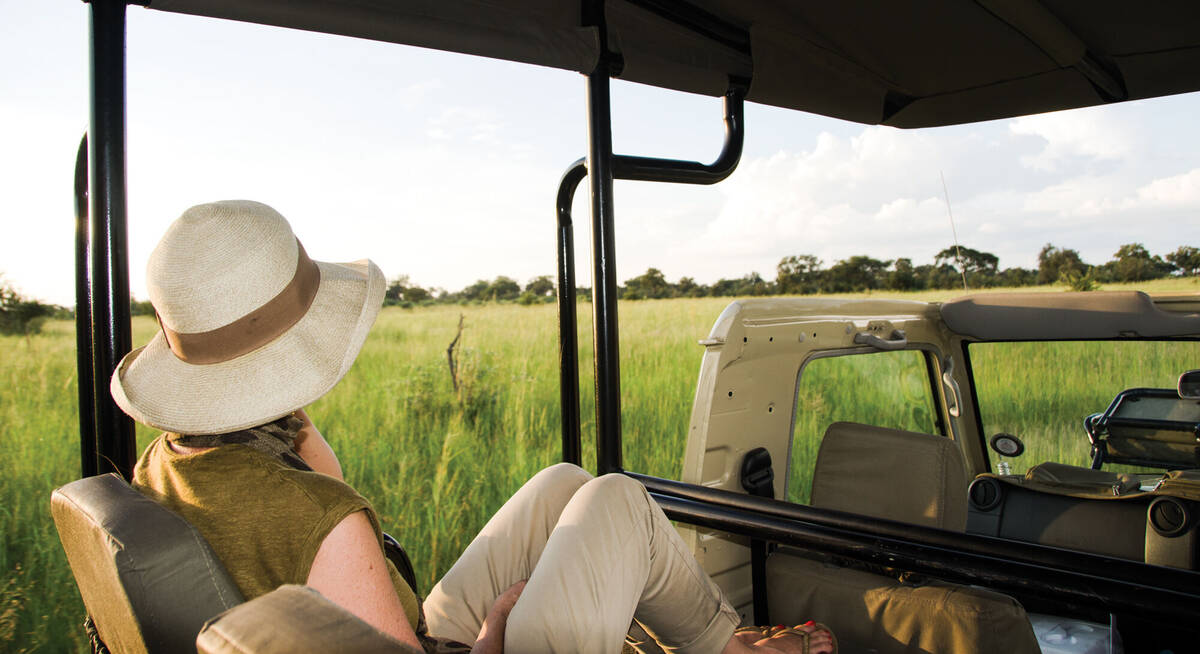
Rock Hare Self-drive Safari
20 days • 12 locations
WINDHOEK AIRPORT TO VICTORIA FALLS AIRPORT
An in-depth look at Namibia from the Namib Desert to the Caprivi, with additional stops in Botswana and Victoria Falls. This three-week adventure includes an unrivalled mix of environments and is great value.
US$7,230 - US$8,170 per person
Our best 23 lodges and safari camps in and around Namib-Naukluft National Park
With its blend of luxury and adventure, the Namib-Naukluft National Park is a prime destination for safari and wilderness enthusiasts.
Distributed through the park are lodges of many styles that provide easy access to its stunning landscapes: the towering red dunes of the Sossusvlei area, and the rugged Naukluft Mountains, which offer breathtaking hiking trails.
Typically you can expect a harmonious blend of rustic charm and modern comfort from these lodges, often incorporating natural materials and eco-friendly designs that blend seamlessly with the environment. Among the most sought-after are Kulala Desert Lodge, renowned for its private access to Sossusvlei, and Sossusvlei Lodge, celebrated for its panoramic views and luxurious amenities.
Whether you seek solitude in the desert or the thrill of outdoor activities, Namib-Naukluft National Park's lodges can provide an unforgettable safari experience.

Kulala Desert Lodge
The comfortable Kulala Desert Lodge offers fantastic views of the Namib and a private gate to the Namib-Naukluft Park - a bonus on guided excursions.

Hoodia Desert Lodge
The owner-run Hoodia Desert Lodge offers a high standard of accommodation, delicious food and excellent service in a stunning, peaceful setting just 22km from Sesriem.

BullsPort Lodge & Farm
A traditional Namibian farm, BullsPort offers warm hospitality and a genuine rural experience, with excellent hiking and horseriding.

Sossus Dune Lodge
One of only two properties inside the Namib Naukluft Park, Sossus Dune Lodge has a superb location, for visiting the dunes.

Desert Homestead
With great-value accommodation in a lovely setting, Desert Homestead is a great base for exploring Sossusvlei.

Zebra River Lodge
Zebra River Lodge offers a range of hikes around the Tsaris Mountains from a comfortable and homely base.

Little Kulala
A high-end lodge with spectacular views, Little Kulala, makes a great base for visits to Sossusvlei or a balloon ride over the Desert.

Rostock Ritz
The igloo-style chalets at Rostock Ritz offer exceptional desert views and make a convenient stopover between Swakopmund & Sossusvlei.

Barkhan Dune Retreat
Barkhan Dune Retreat is a welcoming lodge close to the impressive Spreetshoogte Pass, majors on hiking and relaxation.

Sossusvlei Lodge
Sossusvlei Lodge is one of the larger options in this area. However, it occupies a convenient location next to the Sesriem gate into the Namib-Naukluft Park.

Namib Outpost
About 30km from the gate to Sossusveli, Namib Outpost is a great base for exploring the dunes and surrounding attractions.

Dead Valley Lodge
Dead Valley Lodge is inside the Namib-Naukluft National Park, affording guests almost unprecedented access to the dunes.
Excursions in Namib-Naukluft National Park
Optional, extra day-trips and excursions that are possible while you’re staying in Namib-Naukluft National Park. Talk to us: these excursions are usually best arranged before you go.

Ballooning in the Namib Desert
Half day, including breakfast
Ballooning over the world’s oldest desert is an experience you shouldn’t miss. Enjoy spectacular views as the sun rises over the dune-covered plains and rocky mountains of the Namib Desert. You may even spot the occasional oryx or black-backed jackal punctuating the landscape below.
More about Ballooning
Hoodia Sossusvlei excursion
Full day, including lunch
Escape the crowds and experience the iconic and beautiful Namib Sand Sea with an experienced guide from Hoodia Desert Lodge. The approach is personal and the guiding knowledgeable, making your introduction to the highlights of the Namib-Naukluft National Park, including Sesriem Canyon and the famous pans of Sossusvlei and Deadvlei, both interesting and unhurried.
More about Hoodia excursion
Scenic flights in Namibia
Variable, depending on the flight
Namibia is famed for its stark beauty and boundless desert vistas and there is no better way to soak these in than from the air. A scenic flight gives you a unique perspective on this stunning and varied country, and may even provide a bird’s-eye view of areas that are out of reach to those restricted to terra firma.
More about Scenic flights
Looking for inspiration on where to travel next?
Visit our trip chooser to explore your options and find inspiration for your perfect African adventure
Inspire meFrequently Asked Questions
Namib-Naukluft National Park FAQs
When is the best time to visit Namib-Naukluft National Park?
Find out more detail about the best time to visit this area in the When to Go section.
